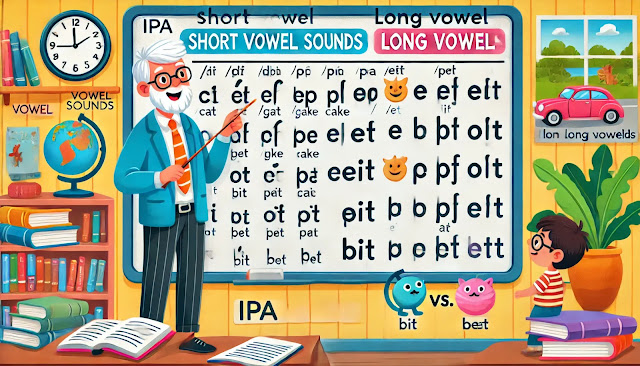Understanding Short and Long Vowels
Vowel sounds in English can be short or long, depending on how they are pronounced.
Short vowels are quick and do not stretch out.
Long vowels are held longer and often match the letter name.
Short Vowel Sounds
Short vowels appear in simple, one-syllable words. They include:
/æ/ – cat, hat, map
/ɛ/ – bed, pen, red
/ɪ/ – sit, bit, fish
/ɒ/ – not, hot, dog
/ʌ/ – cup, sun, bus
Long Vowel Sounds
Long vowels sound like the vowel's name in the alphabet. Common long vowels include:
/eɪ/ – cake, rain, day
/iː/ – tree, seat, be
/aɪ/ – time, five, light
/oʊ/ – home, go, snow
/uː/ – blue, food, true
Spelling Patterns for Long Vowels
Long vowel sounds often follow predictable spelling patterns:
Silent E Rule: hat → hate, kit → kite
Vowel Pairs: boat, meat, rain
Open Syllables: go, she, hi
Common Pronunciation Mistakes
Confusing short and long vowels (e.g., ship vs. sheep)
Not pronouncing the long vowel correctly in silent “e” words
Misidentifying vowel pairs (e.g., beat vs. bet)
Practice Tips
Listen and repeat: Pay attention to native speakers.
Use minimal pairs: Compare words like bit vs. beat.
Record yourself: Check your pronunciation against correct models.
Practice with rhyming words: Group similar sounds together.
Conclusion
Mastering short and long vowels helps improve clarity in speech. By focusing on these sounds, you can enhance both pronunciation and listening skills. Keep practicing, and soon, vowel sounds will become natural to you!

Comments
Post a Comment